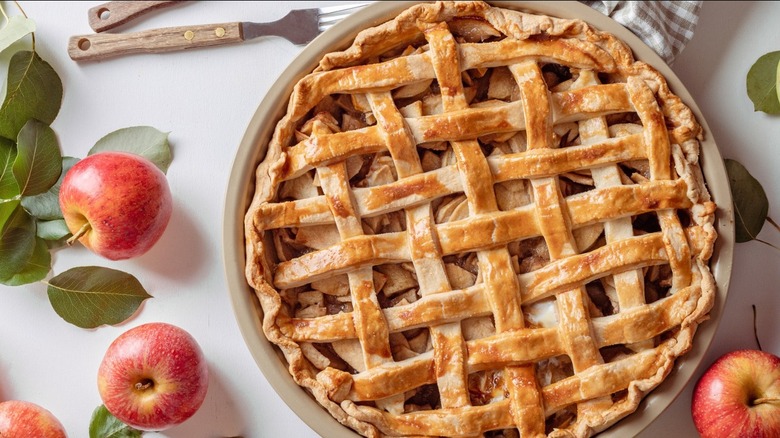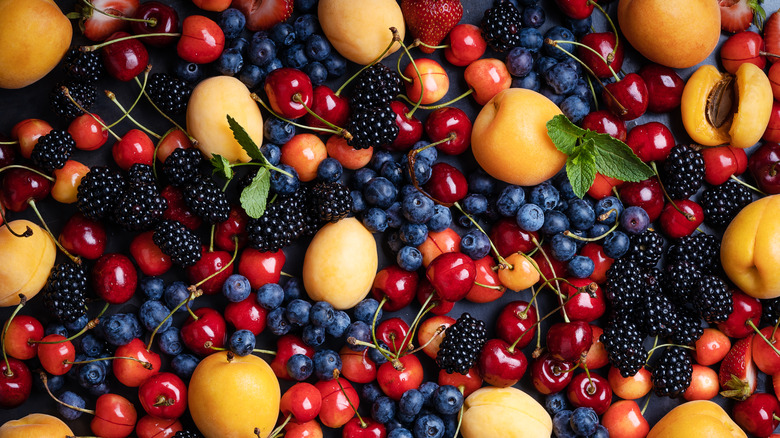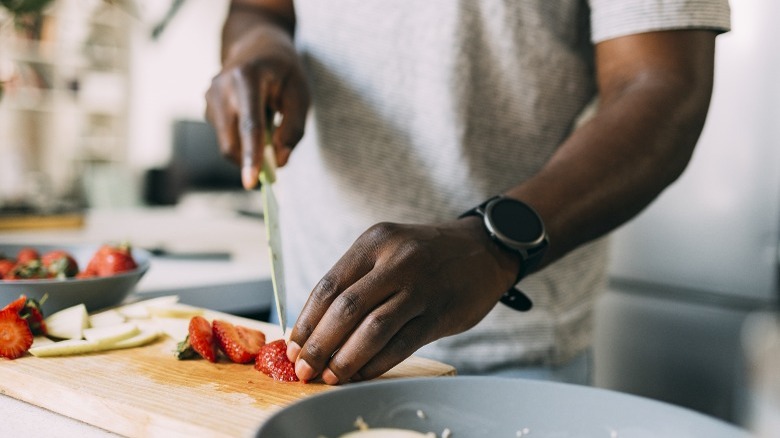If You're New To Making Pie, Fruit Choice Really Matters
Pie rookies often hit a roadblock when it comes to fruit pies. Choice overload hits and you find yourself standing in the grocery store, produce bag in hand, staring at the vast array of fruits and berries, suddenly wondering if it matters which fruit you choose. Are these baking apples? Are grape pies a thing? Are coconuts a fruit? Does any of this even matter? And the answer is yes — to all four, actually.
Fortunately, you can easily narrow down your choices by following one rule: To everything, there is a season. That is to say that you need in-season fruit picked at the peak of freshness to achieve the best results. In-season fruit has a better consistency and more vibrant flavor and it might even be slightly healthier (which we all know is of utmost importance when selecting fruit for pies).
Stores can still import out-of-season fruits from different regions where they're still in season. However, they're pricier than in-season fruit, plus storage and shipping across long distances may degrade their quality by the time they arrive.
Choosing the right fruit for your pie
Sticking with in-season fruit doesn't necessarily mean limiting your choices. Thanks to preservation techniques like freezing and canning, it's totally possible to get near-perfect in-season fruits, even when they're out of season.
That's especially true when it comes to commercially frozen options, which are picked at the same time as the fresh produce you bought a few months ago and then flash-frozen to lock in nutrients and flavor. But you can also freeze your own in-season fruits or learn safe canning techniques.
A lot of people say you should opt for fresh and in-season first and only choose frozen if that's not available, but choose whichever is easiest for you. Frozen fruit often comes pre-prepped, and it's easy to keep in your freezer should the mood strike.
In some cases, preserved fruit (either home-canned or store-bought) can work, but be mindful of the sugar content, especially if you're substituting preserves for fresh or frozen fruit. Since sugar acts as a preservative, fruit preserves and jams are absolutely loaded with it. If you add sugar on top of that, it's likely to result in an unholy sweetness level in your finished pie, likely rendering it inedible to all but the most prolific of sweet tooths.
How moisture affects your fruit pie choices
Moisture content plays a big role in whether a certain fruit is appropriate for a pie and how you make that pie, regardless of whether it's in season. Harder fruits may require precooking or a lower, slower bake, while softer fruits are best placed in the pie raw and can cook quickly at higher temperatures.
For example, you've probably heard of "baking apples." And you probably incorrectly assume you can only use those to make an apple pie. But that's not quite true. Baking apples are firmer and retain their shape better when cooked. But you can still use "eating apples" in a pie. Just take steps to combat the water content, like cooking it off, mixing in baking apples, or using more thickener.
There's no one-size-fits-all when it comes to selecting your fruit for pie, though. Fruits you find at the extreme beginning or end of a season may be firmer than at other times of year. Then, even fruits you'd normally just toss with a bit of sugar and thickener may need a bit of precooking.
You may just need to learn from trial and error what works best for you. But in this case, that's kind of a silver lining, isn't it?


